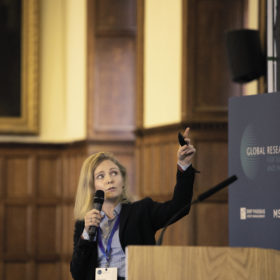Decision time for utilities
Enabler or inhibitor, promoter or prohibitor – there is no doubt that utilities are the pre-eminent actor in the electricity sector. However, whether they have driven the adoption of PV remains unclear at best.
Riding strong resi growth
Solar stocks have seen significant upside in October, writes ROTH Capital Partners’ Jesse Pichel. The Guggenheim Solar ETF (TAN) increased 9.4% vs. the S&P 500 and the Dow, which increased by 3.0% and 2.8%, respectively. Year to date, the TAN gained 139% vs. the S&P 500 and the Dow, which rose 7.8% and fell 0.2%, respectively.
Will Covid-19 continue to weigh on the PV industry?
As much as 15% of all renewable energy projects in Europe could be delayed or canceled due to the coronavirus crisis, according to a recent warning issued by McKinsey & Company. The pandemic has also had a negative impact on the energy markets themselves, says the consultancy. Persistently lower commodity prices made conventional energy more attractive, and the expansion of renewables less popular.
As low electricity prices chip away at future profitability of PV and wind energy, incentives for investment have failed to materialize. And this, in turn, has deterred project developers from concluding new power purchase agreements. Martin Schachinger of pvXchange examines the ongoing effects of Covid-19.
Reform meets opposition
Since President Andrés Manuel López Obrador’s election at the end of 2018, renewable energy in Mexico has faced an uncertain regulatory environment. The current government is focused on restoring the power and influence of Mexico’s state-owned energy companies. But it is now at a crossroads, as the previous administration aimed to open the segment up to foreign investment. Maria Chea of IHS Markit examines the policy decisions the government has taken this year and how these have soured private investor sentiment. These changes will likely weigh on utility-scale PV procurement in the country through 2024.
Prospects for bifacial and large-format products
The pandemic and accidents at polysilicon labs in China’s Xinjiang region put PV manufacturers under pressure to maintain production this year, while slowing cell and module R&D. After half-cut and multi-busbar becomes commonplace, manufacturers will continue to explore the high-density assembly methods that emerged last year, as well as n-type cells. But the market is also shifting to large formats, and the share of bifacial products is growing this year. As sizing up modules can bring immediate returns, PV InfoLink’s Amy Fang expects the PV industry to prioritize the development of large formats and bifacial products next year.
The future of Turkish PPAs
Everyone is talking about how power purchase agreements are a key tool to increase PV capacity in Turkey, due to the looming uncertainty of the country’s feed-in tariff regime after mid-2021. According to Stantec Turkey’s Selen Inal, Koray Goytan, and Alcan Ozden, the incentives could be lower than expected, or even unavailable for some technologies. This has raised questions about alternative financing mechanisms.
The utility and PV
Agents of change or recalcitrants? Leaders or laggards? The utility is sometimes seen as a crucial stakeholder and, at other times, as an antagonist to the PV industry. And while large-scale solar may seem the perfect fit for utility adoption, the future increasingly looks distributed.
Green utilities show resilience
European utilities with large exposure to renewable energy have performed well this year, despite a downturn in both energy demand and prices on the back of Covid-19.
Behind the curve
Even as solar installations continue to grow and renewables make their way further into the energy mix, a look at the bigger energy picture reveals a worrying lack of commitment among utilities to a transition away from fossil fuels. This was the conclusion of researchers at Oxford University, who found that globally, less than half of all utilities have prioritized the development of renewables over the past 20 years. Even among those that have focused on solar and wind, just 15% actually reduced commitments to fossil fuels at the same time.
India’s tender prices tumble, despite Discom delays
India’s state-owned electricity distribution companies (Discoms) are in dire financial straits, as they owe some $16 billion to generators, according to the Institute for Energy Economics and Financial Analysis (IEEFA). Despite this, national PV auctions have been oversubscribed and are setting record low tariffs in the country, indicating strong interest from developers – if the Discom challenge can be overcome.










